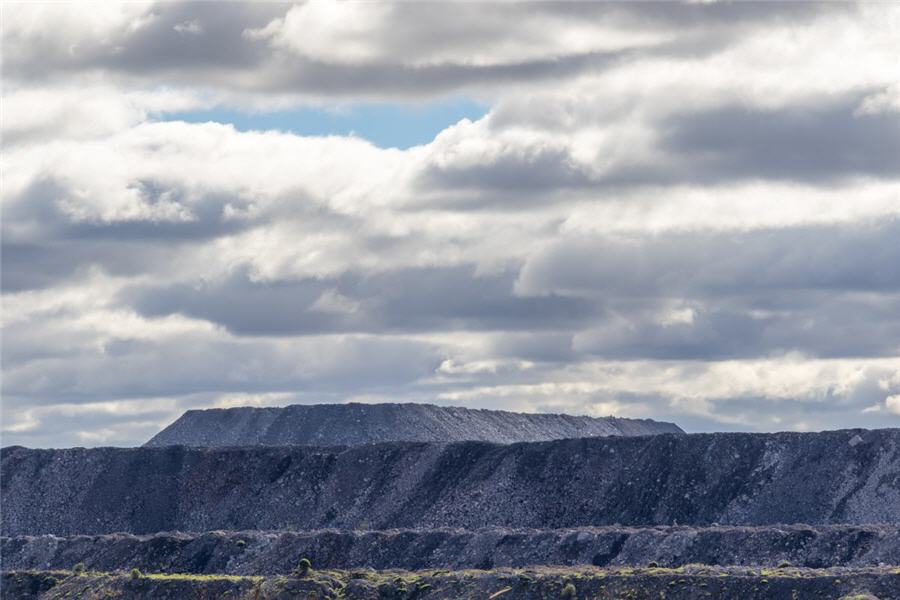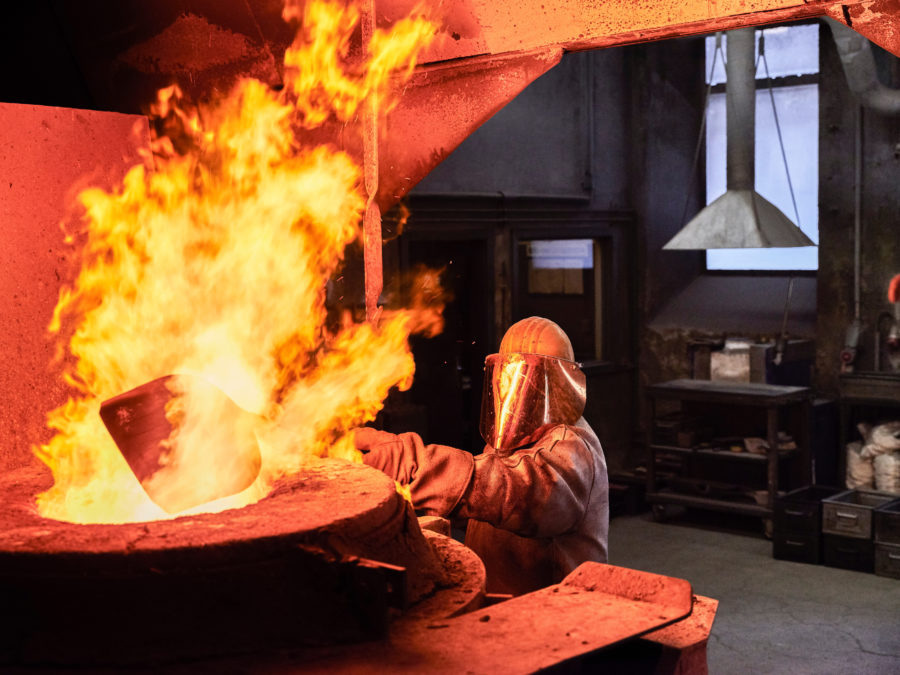Miners look to carbon capture to move beyond net zero

(The opinions expressed here are those of the author, Andy Home, a columnist for Reuters.)
The global race to carbon neutrality is a double-edged sword for the metals and mining sector.
The world is going to need a lot more of metals such as lithium, copper and nickel to decarbonise, but the mining sector is itself a big carbon emitter.
Mining contributes between 4% and 7% of man-made greenhouse gases, much of it generated by coal both as a mined resource and as a power source, a 2020 report by consultancy McKinsey found.
The world’s mining companies are rushing to reduce their carbon footprint through electrification and a shift to renewable power.
Carbon capture could allow some to move beyond neutrality to become net carbon negative.
Read more: COP26 will be a colossal mining cop-out
The technology for industrial-scale carbon capture and storage is still in its infancy and largely untested.
But some minerals do it naturally. It’s just a case of having the right rock and speeding up the process.
Miners tend to be the perennial villains in the environmental debate, but they could yet be the unlikely pioneers of large-scale and permanent carbon storage.
Circular carbon
Carbfix, a subsidiary of Iceland’s Reykjavik Energy, has since 2014 captured over 73,000 tonnes of carbon dioxide from the Hellisheidi geothermal power plant and pumped it underground.
Iceland’s basalt rock formations are perfect for converting carbon dioxide into carbonate minerals, effectively trapping the gas in a stable form for millennia.
Nature does this all the time. Rocks dissolve with rain-water and flow into rivers, picking up other minerals such as calcium and magnesium along the way before settling on the ocean bed eventually to become carbonate minerals such as limestone.
Such rock weathering absorbs around one gigatonne of carbon dioxide each year. Unfortunately, that’s about how much the earth also creates each year in the form of volcanic activity.
The natural process also plays out in painfully slow geological time.
Carbfix’s solution is to inject as much carbon dioxide as possible into the water before pumping it into the basalt, which speeds up the mineral reaction time to under two years.
The process just needs carbon, water and basalt and is a neat way of returning the carbon to the ground from whence it came. And it’s cheap at around 15 euros (US$17.50) per tonne.
Carbfix has just announced a tie-up with Rio Tinto to scale up the technology at the company’s ISAL aluminium smelter, which also sits on basalt rock formations.
The initial injection wells for the Coda Terminal, the world’s first mineral carbon storage hub, will be drilled next year with commercial production due in 2025.
Rio will benefit not only from carbon capture within its smelter and power supplier but also from the carbon credits accruing from its basalt-rich land, a significant asset in a market that is already starting to fracture between low- and high-carbon aluminium products.
Carbon-hungry tailings
It doesn’t have to be basalt and you don’t have to inject carbon dioxide underground for this mineralisation process to work.
As BHP Group has found out at its Nickel West operations in Western Australia.
The tailings at the Mt Keith mine, rich in magnesium oxide, another carbon absorber, have been capturing around 40,000 tonnes per year “accidentally and unknowingly”, according to Greg Dipple, the University of British Columbia professor who led a study on the waste material.
Tailings speed up the weathering process because the rock has been crushed, exponentially increasing the surface area for mineral reaction, he told the Canadian Mining Journal.
BHP is now conducting further studies on its tailings dam to see just how much more carbon might be absorbed by tweaking the natural process.
Nickel is a key metallic input for lithium-ion batteries and BHP signed in July a supply deal with Tesla. The company boasts its nickel carries half the carbon footprint of even the newest producers in top supplier Indonesia.
Its green nickel could become greener still thanks to its tailings dam.
Greener metal
Nickel and precious group metals are often found in the right sort of rock – ultramafic in geologist speak – for carbon sequestration, adding a new dynamic to project financing.
Talon Metals Corp is hoping its Tamarack nickel-cobalt-copper project in Minnesota will not only supply U.S. battery makers with green metal but will actively absorb carbon while doing so.
The company is studying the potential of carbon capture both via tailings and through injection into the surrounding rock formation.
The first can shift the carbon dial down towards neutrality. Mt Keith’s tailings, for example, offset around 11% of its carbon footprint each year, according to Dipple.
The second, actively buying up carbon from nearby industries such as steel makers before injecting it underground, is the way towards becoming net carbon negative.
As with both Rio’s Iceland aluminium smelter and BHP’s nickel operations, this reinforces the green credentials of the product for discerning buyers such as Tesla’s Elon Musk.
But the real significance could be as much about image as economics.
Talon Metals is hoping to fast-track the Tamarack project, which ticks all the Biden Administration’s boxes for enhancing domestic supply chains for critical and battery minerals.
However, steering a new mine through the U.S. permitting process is getting increasingly difficult.
The Twin Metals copper-nickel project, also in Minnesota, is facing a potential 20-year ban on the land it wants to mine. Antofagasta, the project owner, is appealing the U.S. Forest Service’s proposal.
The fate of the Resolution copper project, a long-stalled joint venture between Rio Tinto and BHP, is also now at an appeals court as Native Indians seek a reversal of the original land agreement.
It’s unclear how the Biden Administration can square its green environmental credentials with its vision of a green industrial revival made with domestically-sourced metals.
Carbon capture injects a whole new dimension into the heated debate around new mines and metals plants.
Mining is “the most toxic industry in America”, according to Becky Rom, national chair of The Campaign To Save The Boundary Waters, an environmental group opposed to the Twin Metals project.
Would new projects attract such venom if they could prove that they were part of the environmental solution rather than the problem?
We may not have long to find out.
The idea of a nickel mine or aluminium smelter being net negative in terms of carbon emissions may seem far-fetched, but the reality may be coming sooner than you think.
(Editing by Mark Potter)
{{ commodity.name }}
{{ post.title }}
{{ post.date }}



Comments